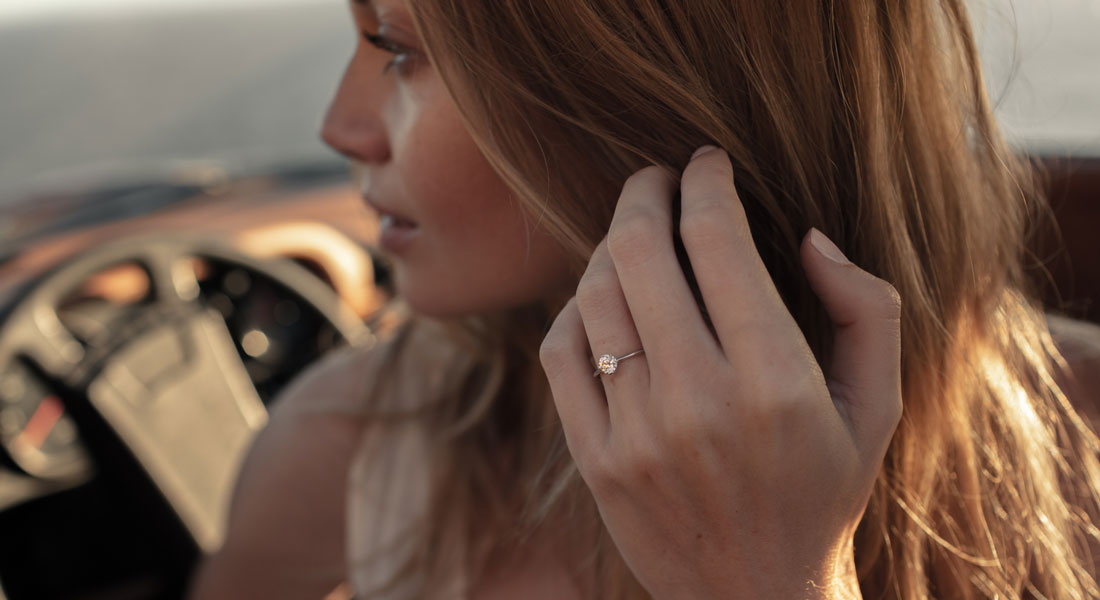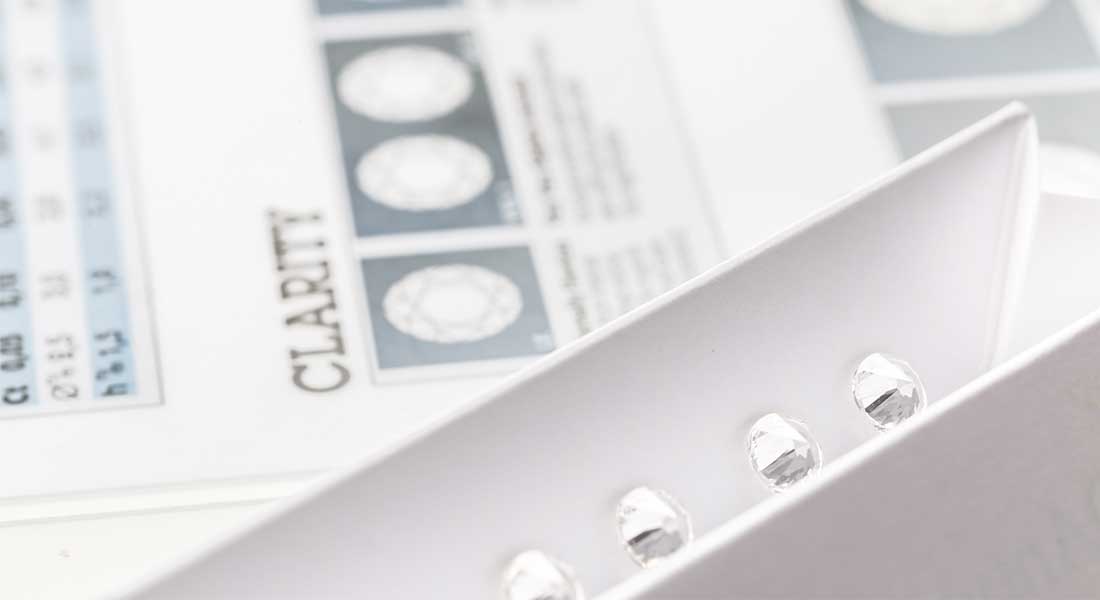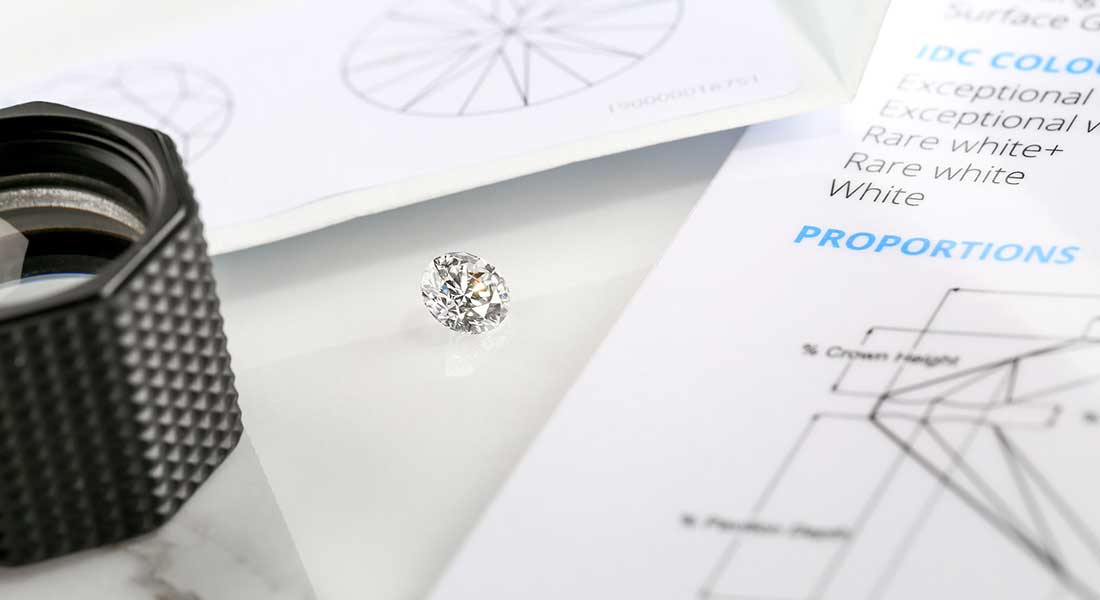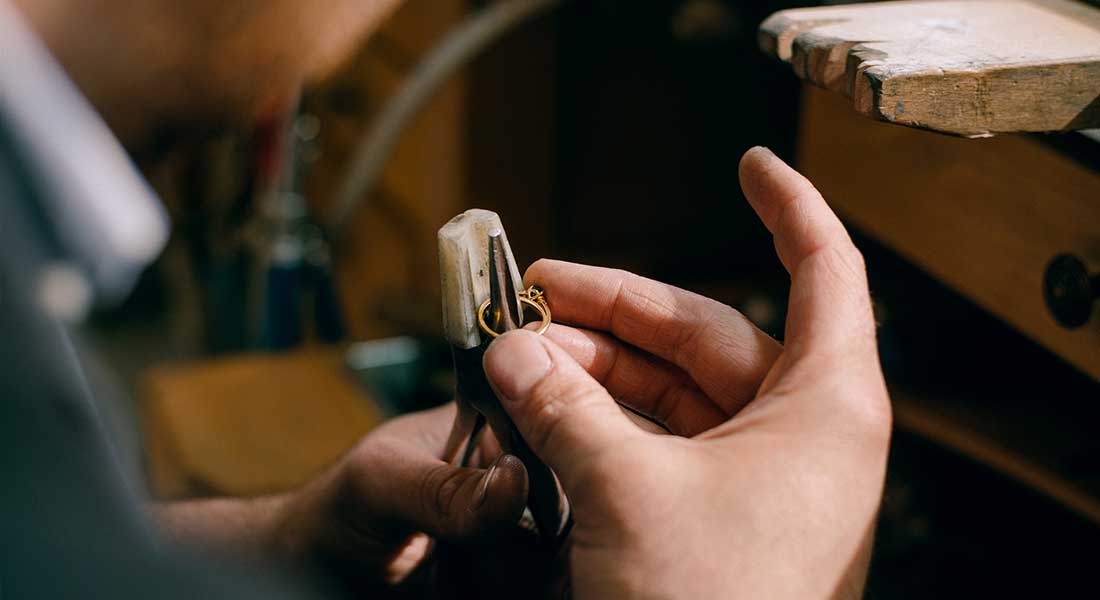The history of diamonds
Subjected to very high pressure and temperature, the first diamonds were born in the bowels of the earth, in India, more than 3,000 years ago.
Its name comes from the ancient Greek adamas meaning "unbreakable, unalterable, pure". It is crystallised carbon ejected by the movement of the Earth's plates and volcanic irruptions at the Earth's surface.
To extract a diamond from the Earth, it must be moved to a factory and then removed from the ore protecting it. The diamond is then washed and treated to remove all traces of impurity.
Until the early 18th century, India was the world's only source of diamonds. Today, we find deposits all over the planet. In fact, the leading diamond producers are in Brazil, South Africa and Russia. Throughout history, diamonds have won the admiration of elites and the highest crowned, who have worn them to embody power, courage and invisibility. Over the centuries, diamonds have become a symbol of love, and today they adorn many of the world's most famous jewels. engagement rings. What's more, it involves the stone for the natives of april.
Diamond characteristics
Did you know that diamonds are the hardest stone on the planet?
In fact, the reference scale known as the Mohs scale, designed to classify the hardness of minerals and precious stones from 1 to 10, ranks diamond as the hardest stone on our planet (10/10). In fact, only a diamond is capable of scratching another diamond.
What's more, diamonds are excellent thermal conductor for a known solid. It conducts heat better than other known minerals such as silver or copper. Although we only use diamonds to adorn our jewellery creations, it is also a mineral that is widely used in industry (drilling, cutting and polishing equipment and tools such as circular blades).
Diamonds are one of the most coveted stones in the world and offer many virtues and benefits to those who own them, whether in jewellery form or not.In fact, diamonds increase vitality and bring harmony between body and mind.
Today, this stone reigns over the world of jewellery. This is due in particular to itsvery high refractive index estimated to be the highest there is for crystals. In fact, light travels very easily through the heart of the stone, giving it an incomparable brilliance also known as the fire of the diamond. Fire is a characteristic of stones with a high refractive index. It materialises in flashes of light deployed on its surface when it is moved back and forth in front of a light. The rays of light captured by the stone are reflected on the different facets of the gem. However, the fire depends on the quality and cut of the stone. The latter must be perfectly faceted. But what defines the quality of a diamond today?
Diamond quality : The 4Cs
At Lepage, father and son diamond merchants, trained at the National Gemological Institute, compare hundreds of diamonds one by one every month while taking into account a universal method developed by the Gemmological Institute of America in 1931 (GIA). This involves four essential criteria known as the 4 Cs (cut, weight, colour as well as purity). In this way, they ensure that each stone meets our Maison's exacting criteria.
Carat
The first C stands for carat. This is the measure of the stone's weight. 1 carat = 0.20 grams.
This characteristic is largely responsible for its price. Theprice of a diamond is exponential according to its weight, meaning that the higher its caratage the higher its price will be. This is explained in particular by the rarity of high-caratage stones. In fact, only 1% of diamonds mined will be more than one carat once cut.
At Lepage, our diamonds are weighed to the nearest hundredth of a carat to determine their weight. Lepage diamonds are certified from 50 points, which is equivalent to 0.5 carat, and can be certified from 20 points (= 0.20 carat) on request. To ensure optimal traceability, the certificate number is also laser engraved on the roundel of your diamond.
Color
The diamond industry uses a colour scale to classify diamonds by quality.
This ranges from D to Z, with D corresponding to Exceptional White + (now considered to be the purest colour). The letter E corresponds to Exceptional White, G to Extra White + and so on. The letters M to Z stand for pale yellow tint.
At Lepage, we take particular care with the colour of the diamond. We ensure that it is almost immaculate white and exceptionally transparent. This is why we only offer stones with a dazzling colour certified D or F. This colour assessment corresponds to the first letter of the famous three letters that define a diamond, for example: DSI, FSI.
Finally, you should know that whiteis not the only diamond colour. Today there are stones called "Fancy diamonds". Some of these are particularly sought-after, such as the deep pink Pink Star diamond, estimated to be the most expensive in history to date.
Cut
Made by hand, the cut of a diamond corresponds to the 'cut' and its faceting (literally the size of its facets). This determines the diamond's sparkle and brilliance. Indeed, when the angles and proportions are worked in a certain way, the stone reveals its fire, which then determines its value.
The cut is assessed on three criteria: 'cut grade', 'proportions' and 'polish' and will vary from stone to stone. This is a key process for the final beauty of the stone, as it reveals all its brilliance.
A perfectly mastered cut will transform a natural diamond (which is originally rough) into a brilliant stone where the light diffuses perfectly. Conversely, a clumsy cut will make the stone dull…
Namely, the cut of the diamond will be measured by what is called the cut grade: Excellent, Very good, Good, Fair or Poor. Our gemologists check that all the facets of our diamonds are perfectly symmetrical and proportional to each other in order to best reflect the light that passes through them; "the fire" of the diamond. We only select diamonds with an Excellent or Very Good cut, the highest that can exist.
Clarity
Purity consists of distinguishing the number of inclusions present inside or outside the stone.
Inclusions are foreign bodies that have crept into the stone during its formation. This process is completely natural for natural diamonds. In particular, it allows us to check that the stone is not a synthetic stone produced in a laboratory.
The purity of a stone is measured using a scale ranging from FL to P2. It ranges from FL (flawless) or IF (Internally Flawless) for stones with no inclusions, to S or I for stones with inclusions that are difficult to see with the naked eye.
The latter corresponds to the last two letters that you will find on the quality of a diamond, for example DSI. In order to best assess the purity of our diamonds, we examine them with a 10x magnifying glass to spot any imperfections. At Lepage, all diamonds are certified minimum SI, i.e. they have no imperfections visible to the naked eye.
The Lepage diamond
One of the most precious and exceptional stones on earth, diamonds are without a doubt exceptionally beautiful. Our diamond merchants and gemologists take particular care in selecting the stones that will accompany you for the rest of your life.
Each stone is sorted one by one in Antwerp by our two expert gemologists: Mr Jean-Pierre Lepage and his son Edouard. Both make sure they select stones of impeccable quality to give the jewel the splendour it deserves.
This is why we offer two qualities of diamonds: DSI and FSI, i.e. indisputable quality. Stones over 0.50 carat are certified in the form of a certificate issued by the GIA or the HRD, two independent international bodies that determine the quality of stones. These certificates set out in detail the 4Cs mentioned above.
The certificate is an official document containing all the information and describing very precisely the characteristics that give your Lepage diamond its value. Internationally recognised, it allows you to be certain of the intrinsic qualities of your stone and makes your diamond, eternal by nature, an asset to be passed on. What's more, they guarantee a certain traceability and quality of the stone and contribute to ethical commitments.
As ethics is an important subject for our Jewelry Maison, it was important to us to source our diamonds from diamond merchants who respect the Kimberley Process, thus ensuring that our diamonds do not come from conflict zones. Our steps didn't stop there, as in 2020 we joined the Responsible Jewellery Council. We have thus worked actively on all social, environmental and ethical issues enabling us to increase our corporate responsibility in the world of Jewellery and to always offer you more conscious, responsible and quality products.
To keep up to date with all the latest jewellery news from our Maison, subscribe to our Instagram account.





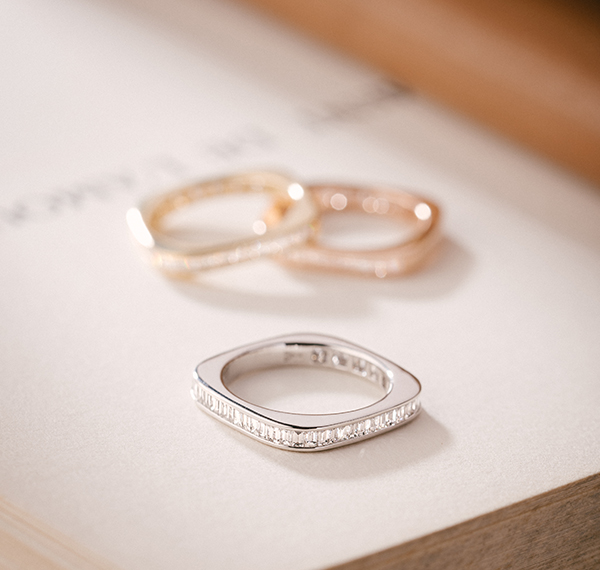
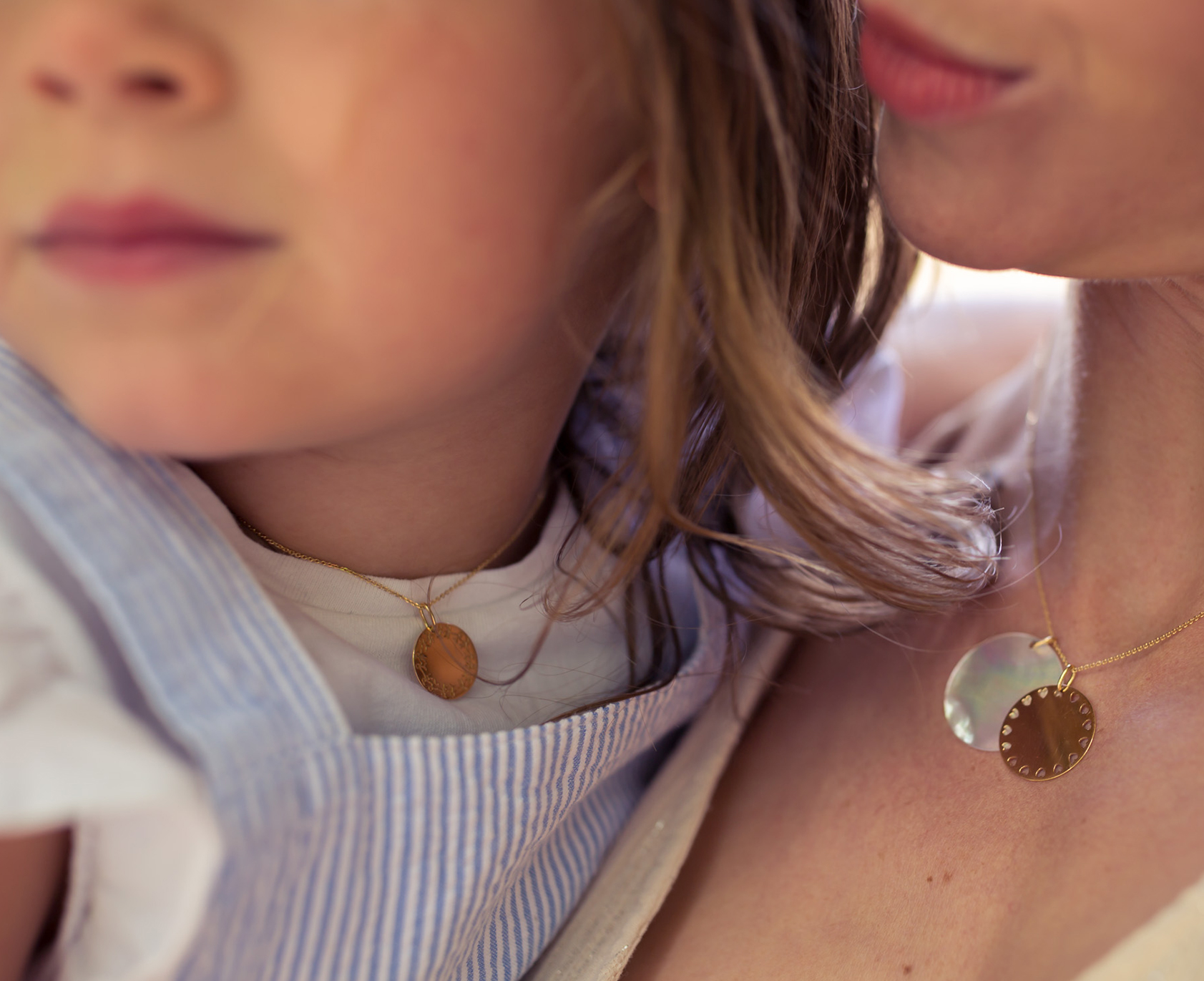
.png)



